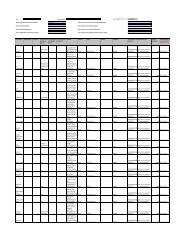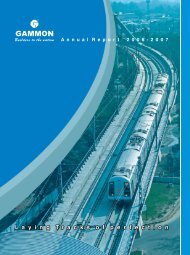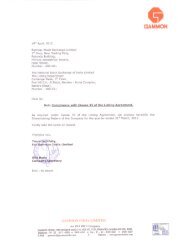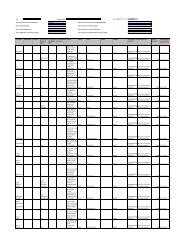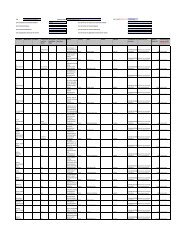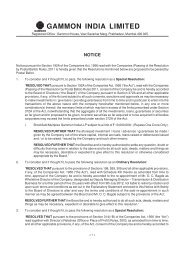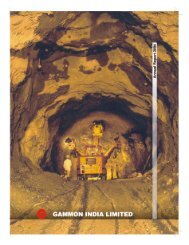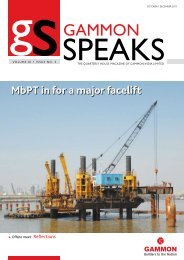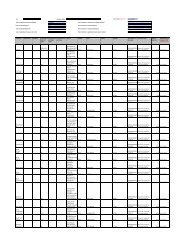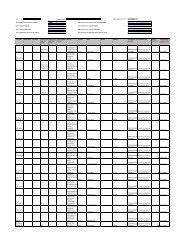GAMMON INDIA LIMITED
GAMMON INDIA LIMITED
GAMMON INDIA LIMITED
You also want an ePaper? Increase the reach of your titles
YUMPU automatically turns print PDFs into web optimized ePapers that Google loves.
Development Authorities, Metro Rail Corporations amongst others. These agencies’ investment budgets are<br />
included in the Government's Five-Year Plans. The Five-Year Plans are a key tool of the Government in its<br />
economic planning. The plans are developed, executed and monitored by the Indian Planning Commission.<br />
The 10th Five-Year Plan (the “10th Five-Year Plan”) related to the period from 2002 to 2007. The 11 th<br />
Five-Year Plan (the “11th Five-Year Plan”) relates to the period from 2007 to 2012. The following table<br />
sets forth the planned levels of infrastructure and construction investment in various sectors under the 10 th<br />
and 11th Five-Year Plans during the respective periods:<br />
(Source: Planning Commission, XI 5-Year plan)<br />
Funded Infrastructure Development<br />
Many construction projects in India are funded by the Government, state government or by governmental<br />
organizations. Projects commonly developed through this development model include irrigation systems,<br />
electrification and highways. Contracts are entered into for the construction and operation of the projects<br />
being developed. Funded construction projects typically fall into one or more combinations of the following<br />
categories:<br />
Lump sum or turnkey contract, which provides for a single price for the total amount of work,<br />
subject to variations pursuant to changes in the client’s project requirements. The client supplies all<br />
the information relating to the project, including designs and drawings. Based on such information,<br />
contractors are required to estimate the quantities of various items, such as raw materials, and the<br />
amount of work that would be needed to complete the project, and then prepare a bill of quantities<br />
(“BOQ”) to arrive at the price to be quoted.<br />
Item rate contract, which is a contract in which the price of each item is presented in a BOQ<br />
furnished by the client. In item rate contracts the client supplies all the information, including the<br />
design, drawings and a BOQ.<br />
Percentage rate contract requires a contractor to quote a percentage above, below or at par with the<br />
estimated cost furnished by the client. In percentage rate contracts, the client supplies all the<br />
information such as design, drawings and BOQ with the estimated rates for each item of the BOQ.<br />
These contracts typically contain price variation or escalation clauses that provide for either reimbursement<br />
by the client in the event of a variation in the price of key raw materials, or a formula that links the<br />
escalation in amounts payable by the client to pre-defined price indices published periodically by RBI or the<br />
Government. In contracts that do not include such price variation or escalation clauses, the contractor faces<br />
the risk of the increase of prices of key raw materials and other inputs during the project execution period.<br />
Public Private Partnership Model (PPP)<br />
The following table shows the percentage of PPP model used in different sectors:<br />
54





